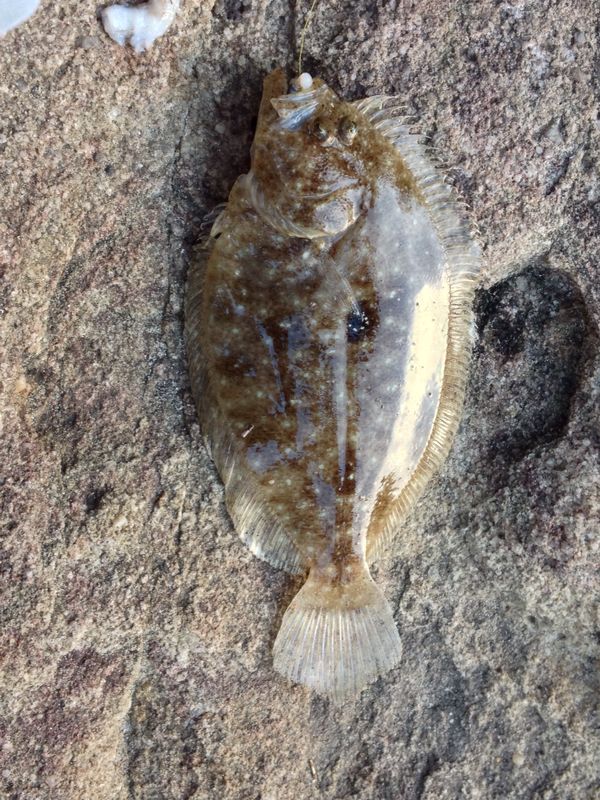
Catch ‘n Cook: Flatfish
Shawn Harris went fishing with ultra light tackle under the cliffs of the Uvongo Estuary this week. Using tiny prawn baits he had a blast catching little strepies and blacktail, until he hooked into this tasty flatfish.
Flatfish are commercially hauled out all over the world, but in southern African waters the fishery is not feasible. They are hard to catch and bury themselves in the sand out of the way of nets. But every now and then you will catch one of these tasty critters in the surf or an estuary…and they are delicious.

It’s easy to split open the sole from head to tail, along the backbone and then cut into the two fillets onto the bones, creating a pocket each side that you can now stuff with whatever you like. Crayfish, mussels, clams, shrimps…whatever you can get ahold of!
Slice a bunch of onions and green peppers, and place them all around a baking dish. Place the stuffed flatfish on top of this base, and go for it with all your favourite seasonings. Crushed garlic and olive oil sprinkled over the whole thing wraps it up.
Into a hot oven and in about 15 minutes take out and serve…
We made this dish in a pizza oven and it came out perfect. Any oven will do, you just have to variate the timing according to your available temperature. 180 Degrees is the right heat.
There are two types of flatfish we get in our waters, very closely resembling each other but differing in spines, scales and fins. They are both called Mancopsetta, and then Lepidosetta and Milfordi being the two variants. The Milfordi model being named after a certain Milford, who worked at I&J and contributed greatly to marine conservation and science, in the 60’s.
